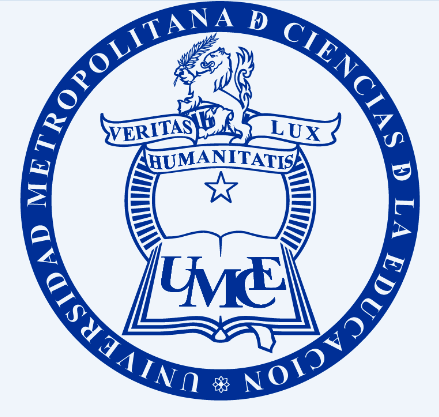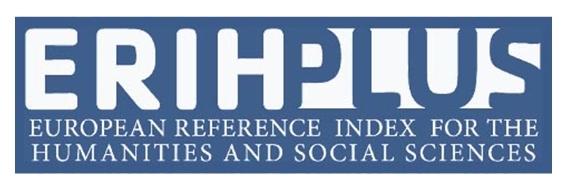Contenido principal del artículo
jul 8, 2019
Resumen
El siguiente artículo sugiere una propuesta didáctica para trabajar el texto Niño mundo de la autora Aurora Mateos a través del desarrollo de la empatía en el aula. Como metodología de trabajo, propongo el método de actuación realista del director escénico y pedagogo teatral Konstantín Stanislavski y el trabajo de Lindsay B. Cummings sobre el uso del diálogo y de la empatía en el ejercicio teatral.
Descargas
Política propuesta para revistas que ofrecen acceso abierto
Aquellos autores/as que tengan publicaciones con esta revista, aceptan los términos siguientes:
- Los autores/as conservarán sus derechos de autor y garantizarán a la revista el derecho de primera publicación de su obra, el cuál estará simultáneamente sujeto a la Licencia de reconocimiento de Creative Commons que permite el uso de este material siempre que se indique su autoría y la fuente original de su publicación (URL de la revista), no se use con fines comerciales y sin derivaciones de la obra original.
- Los autores/as podrán adoptar otros acuerdos de licencia no exclusiva de distribución de la versión de la obra publicada (p. ej.: depositarla en un archivo telemático institucional o publicarla en un volumen monográfico) siempre que se indique la publicación inicial en esta revista.
- Se permite y recomienda a los autores/as difundir su obra a través de Internet (p. ej.: en archivos telemáticos institucionales o en su página web) antes y durante el proceso de envío, lo cual puede producir intercambios interesantes y aumentar las citas de la obra publicada. (Véase El efecto del acceso abierto).
Citas
Alcantud, Miguel(director). 2013. Diamantes negros [cinta cinematográfica]. España: Fado Filmes y Potenza Producciones.
Amnistía Internacional. 2018. Informe 2017/2018. La situación de los Derechos Humanosen el mundo. London: Peter Benenson House.
Anónimo. 1996. Lazarillo de Tormes. Madrid: Cátedra.
Anker, Elizabeth. 2012. Fictions of Dignity: Embodying Human Rights in World Literature. Ithaca, NY: Cornell University Press.
Brook, Peter. 2002. La puerta abierta. Reflexiones sobre la interpretación y el teatro.Barcelona: Alba Editorial.
Buñuel, Luis. 1950. Los olvidados [cinta cinematográfica]. México: Ultramar Films.
Cantú Toscano, Mario. 2014. La ciencia en Stanislavski. Una relectura desde susinfluencias científicas. México: Paso de Gato. Colección de Artes Escénicas.
Chiaet, Julianne. 2013. “Novel Finding: Reading Literary Fiction Improves Empathy”. Scientific American[En línea]. Disponible en: https://www.scientificamerican.com/article/novel-finding-reading-literary-fiction-improves-empathy/[Consulta 10/10/2018].
Corcuera, Javier. 2004.Las hijas de Belén [documental]. España: Tus Ojos.
Cummings, Lindsay B. (2016). Empathy as Dialogue in Theatre and Performance. UK: Palgrave Macmilan.
Dickens, Charles. 2008. Oliver Twist or The Parish Boy’s Progress [Libro electrónico]. TheProject Gutenberg. Acceso abierto. Disponible en: https://www.gutenberg.org/files/730/730-h/730-h.htm[Consulta 19/10/2018].
Husserl, Edmund. 1960. Cartesian Meditations, An Introduction to Phenomenology. Trad. Dorion Cairns. The Hauge: Martinus Nijhoff.
Hyatt Edwardm Laura. 2013. “A brief conceptual history of Einfühlung: 18th-Century Germany to Post-World War II U.S. Psychology”. History of Psychology 16.4: 271.
Jorge, Miguel. 2018. “Por qué había niños en pequeñas jaulas exteriores colgando deedificios de Nueva York o Londres”. Gizmodo[En línea]. Disponible en: https://es.gizmodo.com/por-que-habia-ninos-en-pequenas-jaulas-exteriores-colga-1825825643[Consulta 22/10/2018].
Kristeva, Julia.1987. Tales of Love. New York: Columbia University Press.
Lacapra, Dominick. 2004. Historic in Transit: Experience, Identity, Critical Theory. Ithaca:Cornell University Press.
Lagemann, Rudi.2006. Anjos do Sol [cinta cinematográfica]. Brasil: Globo Filmes / Apema Filmes / Caradecão Filmes.
Mansfield, Nick. 2012. “Human Rights as Violence and Enigma: Can Literature Really Be of Any Help with the Politics of Human Rights?” Theoretical Perspectives of Human Rights and Literature. New York: Routledge, pp. 201-2014.
Mateos, Aurora. 2015. Niño mundo. Scotts Valley (CA):CreateSpace IndependentPublishing Platform.
Morris, Lean y Roberto Romano. 2005. Stolen Childhoods [documental]. United States: Galen Films.
Nowak, Magdalena. 2011. "The Complicated History of Einfühlung.” Argument 1 2: 301-26.
Polgovsky, Eugenio. 2008. Los herederos [documental]. México: Tecolote Films.
Rocamora Braceli, Natalia. 2015. La super-estrategia de Stanislavski: motivos de unmétodo para la interpretación del actor contemporáneo. Granada: Universidad deGranada.
Romano, Roberto. 2011. The Harvest / La cosecha [documental]. United States: RoryO’Connor y U. Roberto Romano.
Saura, Jorge. 2015. “Los herederos de Stanislavski”. Acotaciones. 35: 61-83.
Schanberg, Sydney H.1996. “Six Cents an Hour”. Life Magazine [En línea]. Disponible en: https://laborrights.org/in-the-news/six-cents-hour[Consulta 27/10/2018].
Stanislavski, Konstantín. 2009. El trabajo del actor sobre sí mismo en el proceso creadorde la encarnación. Trad. Jorge Saura. Barcelona: Alba.
-----. 1993. El trabajo del actor sobre su papel.Trad. Jorge Saura.Buenos Aires: Quetzal. Colección La Farándula.
-----. 2001. El sistema Stanislavski. Diccionario de términos stanislavskianos. Trad. Ángel Gutiérrez. Murcia: Escuela Superior de Arte Dramático.
-----.2011. La construcción del personaje. Trad. Bernardo Fernández Fernández. Madrid: Alianza Editorial.
-----. 2003. La preparación del actor. Trad. Ricardo Debenedetti. Madrid: Editorial La Avispa.
-----. 1997. Mi vida en el arte. Trad. N. Caplan. Madrid: La Avispa.
Stein, Edith. 1964. On the Problem of Empathy. Trad. Waltrout Stein. The Hague: M. Nijhoff.
Todd, Sharon. 2003. Learning from the Other. Levinas, Psychoanalysis, and Ethical Possibilities in Education. Albany: State University of New York Press.
UNICEF. 2018. “El trabajo infantil”. Unicef para cada niño [En línea]. Disponible en:https://www.unicef.es/noticia/el-trabajo-infantil[Consulta 24/10/2018].
-----. 2018. “Plan de Acción para la Igualdad entre los Géneros para 2018-2021”. Unicefpara cada niño. [En línea]. Disponible en: https://www.unicef.org/es/igualdad-de-genero/plan-de-accion-para-la-igualdad-entre-los-generos-para-2018-2021[Consulta24/10/2018]
V.V.A.A. 2010. “Ted Case Study: Nike: Nike Shoes and Child Labor in Pakistan”. ChinaLabor Watch. [En línea]. Disponible en:http://www.chinalaborwatch.org/newscast/66[Consulta 26/10/2018].
Villaécija, Raquel. 2016. “De la explotación infantil a la batería de los móviles y tabletas”.[En línea]. Disponible en:https://www.elmundo.es/solidaridad/2016/01/19/569dfb40ca474174418b4608.html[Consulta 30/10/2018]
Villena, Miguel Ángel. 2018. “Entrevista a Juan Mayorga: El teatro es el arte de la reunióny cobra fuerza en una época donde todo ocurre en una pantalla”. eldiario.es [En línea]. Disponible en: https://www.eldiario.es/cultura/teatro/espectador-vuelva-regrese-transformado-teatro_0_848666093.html[Consulta 22/12/2018].
Vischer, Robert. 1990. “On the optical Sense of Form: A Contribution to Aesthetics”. En Henry Francis Mallgrave y Eleftherios Ikonomou (eds.), Empathy, Form, and Space. Problems in German Aesthetics, 1893-1983. Santa Monica: Getty Center.






